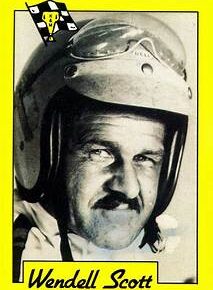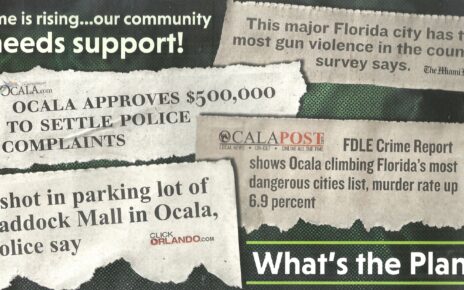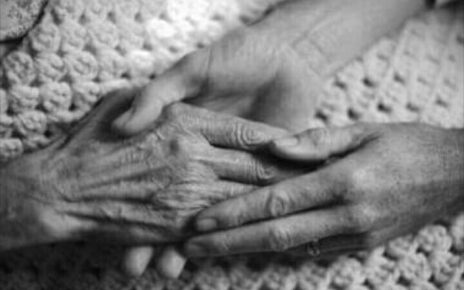Brutal Drug Treatments Continue Create Drugged Out Society: By the early 1950s, psyciatrists had discovered the next “miracle cure” – one that swelled psychiatric coffers and altered the face, but never the intent, of institutional psychiatry. Developed originally as a synthetic dye, French psychiatrist Jean Delay discovered Thorazine, which had profound effect on patients. Marketed as an “antipsychotic,” the drug severely hindered brain function, creating an effect psychiatrists enthusiastically described as “a chemical lobotomy”.
The release of Thorazine coincided with new developments that would change the way psychiatrists did business forever – new legislation that made drug dispensing dependent on a doctor’s prescription. As a result, big drug companies began to woo doctors and whereas, prior to 1951, the American Medical Association had acted as a watchdog of the pharmaceutical industry, with the injection of drug company cash, the AMA dropped its critical stance and joined the drug marketing gold rush.
As a result, within eight months of Thorazine’s release, psychiatrists had administered it to an estimated two million patients in the U.S. A full three-quarters of these were outside institutions. Psychiatrists and pharmaceutical firms were hard at work creating lifelong customers for their drugs, and conning society into enforcing the administration of their “medications”. The use of these substances continued to spread beyond the confines of psychiatry and into general medicine where they began to be prescribed for everyday maladies. By the mid 1960s, 48% of American adults had taken a psychotropic drug, reaping billions of dollars for the psychiatric and drug industries.
In 1967, psychiatrists and medical doctors met in Puerto Rico to develop their plan for “Psychotropic Drugs in the Year 2000: Use by Normal Humans”. The conference re4port stated: “Those of us who work in this field see a developing potential for nearly a total control of human emotional status, mental functioning and will to act. These human phenomena can be can be started, stopped or eliminated by the use of various types of chemical substances”.
The meeting proposed chemical that could help a person remember or forget a pleasant or unpleasant experience, replace punishment, prolong or shorten memory, prolong childhood or shorten adolescence, regulate sexual responses, induce or prevent learning, and improve married life by bringing to one’s mate “the feeling of fresh wonder that often characterizes the initial or early experience”. Attendees also debated whether lithium, a highly toxic psychiatric drug, could be put in the public water supply.
A staggering range of addictive psychiatric drugs followed, increasingly prescribed for the general population. And with more and more billions of dollars at stake, the psychiatric-pharmaceutical industry bombarded society with advertisements media articles and talk shows, fraudulently pitching the benefits of psychiatric drugs. Finally, perfectly normal people became the target for psychiatric drug marketing.
Drug Marketing Machine:
Heinz Lehmann popularized Thorazine in North America in the 1950s. Lehmann called the drug “a phamacological substitute for lobotomy” and extensively experimented with it. In a study of eight elderly women, three died from psychiatric drugs, two as a result of Thorazine. What the general public learned about the new drugs was molded the pharmaceutical industry’s marketing machine, which played a critical role in the recasting of the drugs as “safe” despite their causing irreversible nervous system damage and, in some cases, death.
Drug Dealers and Pushers:
Nearly all of psychiatry’s drugs have become street drugs.
At the turn of the 20th century, English psychologist Havelock Ellis promoted peyote. In 1940, psychiatrist G.T. Stockings wrote of the “great importance” of mescaline to psychiatry. Both drugs have been, and still are, heavily abused.
In the 1930s, psychiatrists prescribed amphetamines. By the 1960s, amphetamine addicts were known as “speed freaks”. Valium and librium addicts emerged in the 1970s. Withdrawal from these drugs was more difficult than from most street drugs.
Psychiatric drugs used to treat so – called learning or behavioral disorders – Ritalin, Adderall and other stimulants – are now sold on the street for $5 to $10 a pill and known as “Kiddie Cocaine”.
Psychedelic Pitchmen:
In the 1940, psychiatrists experimented with LSD to produce a “model psychosis” in already disturbed patients. In the 1960s, psychologists such as Harvard’s Timothy Leary pushed LSD onto college campuses and the streets, with the motto, “turn on, tune in, drop out”. Oscar Janiger, a Beverly Hills psychiatrist, “turned on” scores of artists, intellectuals and elite members of Hollywood’s entertainment community to LSD. Psychiatrists and drug manufactures knew LSD caused hallucinations, flashbacks, birth defects, and psychosis.
Worldwide Drug Business:
The incestuous relationship between psychiatry and the pharmaceutical industry leads to more than $4.5 billion in drug marketing in the U.S. Per year. Stimulant sales for “ADHD” and antidepressants soared after the FDA approved “direct to consumer” marketing of drugs in print and on TV in 1997. Through drugs, psychiatrists extended their influence beyond hospitals and mental institutions into broad society. This drug trade is now a lucrative worldwide enterprise generating $76 billion a year in sales.
All the while, in an ever – increasing incestuous relationship, psychiatrists continued to invent mental diseases for which drug companies would supply a drug to prescribe.
Today, consumption of these drugs has become so widespread that more than 150 million people worldwide have taken Selective Serotonin Reuptake Inhibitor (SSRI) antidepressants. These drugs are so widely prescribed that the pharmaceuticals travel through the sewage network and end up being recycled into the water system. Scientists have discovered traces of one widely used antidepressant in England and U.S. Drinking water.
Government Warnings:
Growing evidence of the dangers of psychiatric drugs has finally begun to spread into the public domain, and drug regulatory agencies in Europe, the U.S. And other nations are being forced to act.
In 2004, the FDA ordered “black box” labeling for antidepressants to warn that they can cause suicide in children and adolescents. Within eight months, the FDA began warning of the risk of suicide for adults taking antidepressants. England, Japan, Australia and Canada also issued warnings.
In 2005, Europe’s Committee for Medicinal Products for Human Use issued the strongest warning that antidepressants can cause suicidal behavior, hostility, aggression, anger and mood instability in children and adolescents. Hallucinations, psychotic, violent and aggressive behavior and suicide are now FDA acknowledged risks of stimulant drugs. Next, the FDA warned that antipsychotic drugs may cause death in the elderly, while for the general public there is a risk of diabetes.
A History of Dubious Drug Approvals:
The admission that a previously profitable “miracle” drug was faulty or harmful is only made when its patent [sole right to manufacture] has expired or is about to – and a new drug is being ushered in. Witness these earlier drug claims and how they fared:
1954 – CLAIM: Thorazine was supposed to free patients from institutions and save governments money. FACT: Thorazine causes irreversible damage to the nervous system and, together with similar anti-psychotic drugs, has killed 100,000 Americans. It also causes heart irregularities, heat stroke, importance, obesity, blood disorders and seizures.
1955 – Ritalin has long been touted as safe for use on children. FACT: By 1971, Ritalin and other stimulants were scheduled in the same abuse category as morphine, cocaine and opium. More potent than cocaine, it causes stunted growth, weight loss and psychosis. Suicide is a major complication during withdrawal. It can also cause strokes and cardiac arrest.
1958 – CLAIM: Tricyclic antidepressants were said to be “wonder drugs” for dulling depression and faster acting with fewer side–effects than earlier drugs. FACT: These antidepressants frequently cause sedation, drowsiness, difficulties in thinking, a deadening effect, headaches and weight gain. In children, they can cause partial paralysis of the bladder.
1987 – CLAIM: The first *SSRI[1] antidepressant (Prozac) was marketed as safe and virtually side-effect free. By 2004, another nine SSRIs were in use. FACT: These drugs cause anxiety, agitation, insomnia, bizzare dreams, sexual dysfunction, confusion, suicidal thoughts, hostility and violent behavior. Suicide is also a serious risk during withdrawal.
*SSRI[1]: Selective Serotonin (hormone or chemical that transmits nerve impulses) Reuptake (reabsorbtion) Inhibitor.
1990s – CLAIM: New antipsychotic drugs were hailed as breakthrough treatments, with fewer side-effects than Thorazine. FACT: The drug causes leaking breasts, liver and kidney problems, life-threatening diabetes, respiratory arrest and heart attacks.
2002-2005 – CLAIM: The antipsychotic drug Abilify was marketed as safe and effective, with fewer side-effects than other antipsychotics. FACT: The drug causes diabetes and potentially fatal heart-rhythm irregularity.
Drug-Induced Violence:
Psychiatrists know the dangers of the drugs they prescribe. Published studies has shown that both the drugs themselves, and a sudden withdrawal from them, can create aggressive behavior. The Lancet, the British medical journal, reported patients turning homicidal after stopping antidepressants. In 2001, Mamoru Takuma stabbed eight schoolchildren to death and injured 15 other while under the of a tranquilizer. Kip Kinkel, 15, killed two and injured 22 after opening fire in his Springfield, Oregon, high school in 1999 – while taking a psychiatric drug. Eight out of 13 school shootings in the U.S. were committed by teens prescribed psychiatric drugs. In 2001, Andrea Yates drowned her five children, ages six months to seven years. One of the antidepressants prescribed her causes homicidal thoughts according to the drug’s manufacturer.










